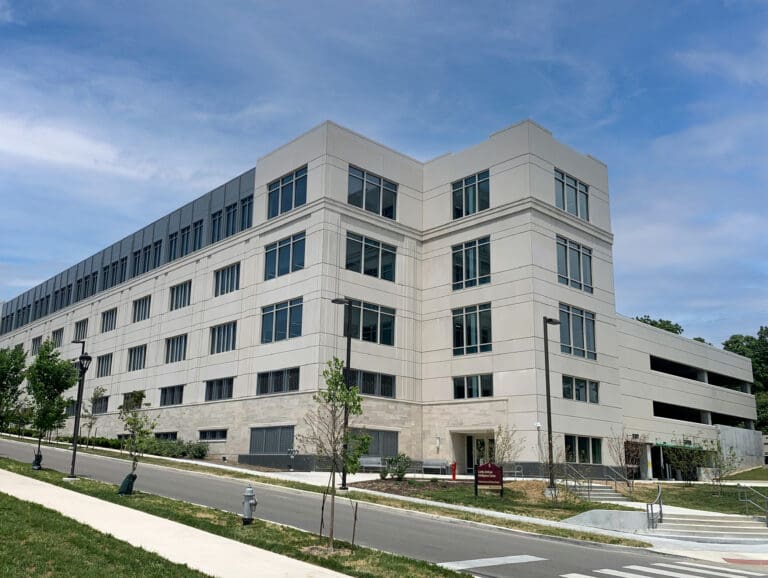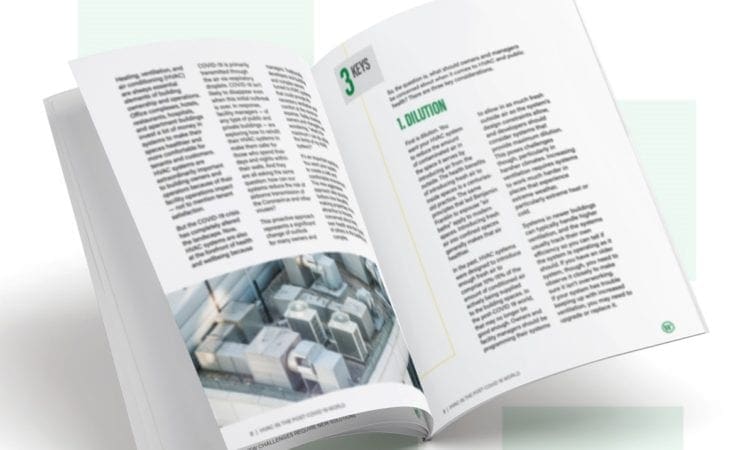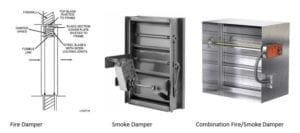So, the question is, what should owners and managers be concerned about when it comes to HVAC and public health? There are three key considerations.
1. DILUTION
First is dilution. You want your HVAC system to reduce the amount of contaminated air in the space it serves by introducing air from the outside. The health benefits of introducing fresh air to inside spaces is a centuries-old practice. The same principles that led Benjamin Franklin to espouse “air baths” apply to modern spaces. Introducing fresh air into confined spaces generally makes that air healthier.
In the past, HVAC systems were designed to introduce enough fresh air to comprise 10%-15% of the amount of conditioned air actively being supplied to the building spaces. In the post-COVID 19 world, that may no longer be good enough. Owners and facility managers should be programming their systems to allow in as much fresh outside air as the system’s design constraints allow, and developers should consider systems that provide maximum dilution. This poses challenges though, particularly in harsher climates. Increasing ventilation requires systems to work much harder in places that experience extreme weather, particularly extreme heat or cold.
Systems in newer buildings can typically handle higher ventilation, and the systems usually track their own efficiency so you can tell if the system is operating as it should. If you have an older system, though, you need to observe it closely to make sure it isn’t overworking. If your system has trouble keeping up with increased ventilation, you may need to upgrade or replace it.
2. FILTRATION
The second key consideration is filtration. Modern HVAC filtration systems can remove contaminants, including particulates that may contain potentially deadly viruses like COVID-19. Research indicates in order to measurably reduce small particulates that may carry Coronavirus, MERV 13 filters would be needed.
A challenge with increasing filtration is the size of the filters in air-handling units. The thicker and denser the filter, the more effective it typically is. However, many systems already house the thickest filters they can handle. Additionally, passing air through a thicker filter makes the system work harder, which can lead to decreased efficiency, the need for more frequent maintenance, and ultimately, earlier replacement of the system itself. Finally, systems with thicker filters require more energy to work properly, increasing the cost associated with operating the system. Ultimately, you need to strike a balance between achieving higher filtration and over-taxing your system. WGI’s mechanical engineering experts can help you achieve that balance.
While filter-based strategies are the traditional approach, there are other ways to clean air. A system becoming more cost-effective is UV filtration, which uses UV light rather than a physical barrier. While the up-front costs of introducing UV filtration are higher than just changing out a filter, this approach provides an affordable option for systems that can’t accommodate larger filters. Modern UV systems are more compact than in the past, and can now fit into spaces that previously could only accommodate filter-based systems.
It’s important to remember that choosing the right filtration strategy isn’t always an “either/or” situation. It’s possible to combine filter and UV technologies to find the right balance.

3. HUMIDITY
The final key consideration is humidity. With humidity, the primary concern is traditionally comfort. The average person perceives 40%-60% relative humidity as comfortable. Normal outdoor relative humidity during summer months exceeds this value, and most air-conditioning systems are designed to reduce humidity by removing moisture from the air.
In the highly sensitive COVID-19 environment, humidity is also a health matter. Public health experts believe that viral particles remain airborne longer in dryer air. This is significant because colder weather typically is accompanied by dryer air, and these months often align with flu season.
Conversely, air that is too humid can cause mold or other issues. Ultimately, 40%-60% relative humidity seems to be the ideal range for providing both a healthy and comfortable environment. Your WGI HVAC expert can help you find the best level to meet the unique needs for your space.
The good news about humidity is that maintaining ideal levels may not require a full upgrade of your current system. Many existing control systems have indoor humidity monitoring capability, and can even control system operation based on maintaining ideal humidity levels. These systems may simply require updates to the building controls sequences. If a building’s control system is not capable of this, building owners may consider upgrading their existing systems or just adding a separate humidifier or dehumidifier. While adding a new system may be cost-effective in the short term, it could undermine other elements of the HVAC system. Ultimately, as with filtration and ventilation, achieving proper humidity levels is about finding the balance between cost and function.

Your HVAC system is always a vital element of your building’s operations, but in the post-COVID 19 world it’s more important than ever. Let WGI’s HVAC experts help you assure that your system is properly doing its job.























